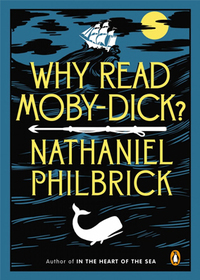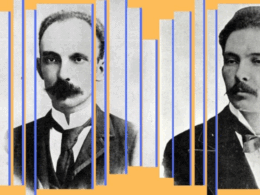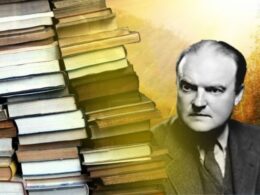
One of the delightful consequences of the publication of maritime historian Nathaniel Philbrick’s provocative new book, Why Read Moby-Dick?, is how it has spurred reviewers to seek the clinching answer.
Philbrick offers an “adaptation” of his argument in the November issue of Vanity Fair. After itemizing what made the time in which Melville wrote such an “extraordinary historical moment”—the sudden eruption of railroads and steamboats, the end of the Mexican War, the discovery of gold in California, and, most ominously, the Fugitive Slave Act of 1850, which made slavery “no longer just a southern problem”—Philbrick expounds:
Melville’s intense imaginative engagement with these forces of turmoil and change meant that the novel he wrote and re-wrote over the course of a year beginning in September 1850 would be about much more than a whaling voyage to the Pacific. Indeed, contained in the pages of Moby-Dick is nothing less than the genetic code of America: all the promises, problems, conflicts, and ideals that had contributed to the outbreak of a revolution in 1775 and were about to precipitate a civil war in 1861, and that have continued to drive this country’s ever contentious march across 160 years, up through the current “war on terror.” This means that whenever a new crisis grips this country, Moby-Dick becomes newly important. It is why subsequent generations of readers have seen Ahab as Hitler during World War II or, closer to our own day, as a profit-mad, deep-drilling oil company in 2010, or as one of several power-crazed Middle Eastern dictators in 2011.Among the expatriates in Paris in the 1920s, Moby-Dick was what one writer described as “a sort of cunning test by which the genuineness of another man’s response to literature could be proved.” In 1927, William Faulkner, who would later hang a framed print of Rockwell Kent’s Captain Ahab in his living room in Oxford, Mississippi, claimed that Moby-Dick was the one novel by another author that he wished he had written. In 1949, Ernest Hemingway, upon entering his 50s, wrote his publisher that he considered Melville one of the handful of writers he was still trying to beat.
In her review of Philbrick’s book in The New York Times Book Review, novelist Kathryn Harrison highlights the “meta” aspect of Melville’s storytelling:
Melville challenged the form of the novel decades before James Joyce and a century before Thomas Pynchon or David Foster Wallace. Calling for tools befitting the ambition of his task—“Give me a condor’s quill! Give me Vesuvius’s crater for an ink stand!”—Melville substituted dialogue and stage direction for a chapter’s worth of prose. He halted the action to include a parody of the scientific classification of whales, a treatise on the whale as represented in art, a meditation on the complexity of rope, whatever snagged his attention. Reporting the exact day and time of his writing in a parenthetical aside, he “pulled back the fictive curtain and inserted a seemingly irrelevant glimpse of himself in the act of composition,” the moment Philbrick identifies as his favorite in the novel. Melville may not have called this playfulness metafiction, but he defied strictures that shaped the work of his contemporaries . .
On The New Yorker’s Book Bench blog, Philip Hoare, fresh from swimming with sperm whales in the Azores, uses his review to revel in the saga’s many levels:
Moby-Dick is not a novel. It’s barely a book at all. It’s more an act of transference, of ideas and evocations hung around the vast and unknowable shape of the whale, an extended musing on the strange meeting of human history and natural history. It is, above all, a sui-generis creation, one that came into the world as an unnatural, immaculate conception.
Much of the impact of Melville’s book on any fierce new convert is implicit in that sense of time travel. Sometimes I read it and I feel like I’m going backward, fast. It reads like something that was written before books were invented, yet it is utterly modern—pre-postmodern, perhaps. It is part of its own prediction, as if it and its characters had been there all along, and had only been waiting to be written. . .
While reading Moby-Dick is a bit like being stoned, it also evokes an Asperger’s air. Ishmael will tell you everything you wanted to know about the whale, and much that he has made up. (Few books are so filled with neologisms; it’s as if Melville were frustrated by language itself, and strove to burst out of its confines.) At the same time, Moby-Dick stands both as a historical reference for the great age of Yankee whaling and as a work of imagination in which whales become avatars as much as they are real animals. Melville would never have finished his book today—he’d be constantly Googling “whale.”
And on Big Think Austin Allen ponders the patterns in Melville’s construction—and the best way to read:
Even among Epic Male Novels, Moby-Dick is very much its own beast. It may be the most shapeless great novel ever written. I like John Gardner’s description: “mysteriously constructed.” You’d be tempted to say insanely constructed, except that the structure always embodies its own best defense. The long stretches of tedium interrupted by bursts of gripping excitement? Exactly like the experience of whale hunting. The intense, exhaustive, narrow focus on whales? The equivalent of a claustrophobic sea voyage with an obsessive captain. And so on. The novel all but dares you not to finish it, lest you fail like Ahab.
My best advice is, if you’re going to read the book, read it. Skimming over chapters like “Cetology” has been a tradition for generations of students, but reading 90 percent of Moby-Dick is like running 23.5 miles of a marathon: you get all the exhaustion with none of the thrill of having done the thing. Worse, you don’t fully appreciate—in the Stockholm syndrome fashion described by Mark O’Connell—those passages in which Melville suddenly rewards you beyond all expectation, with a moment of offbeat pathos or a sentence that knocks you back in your chair.



